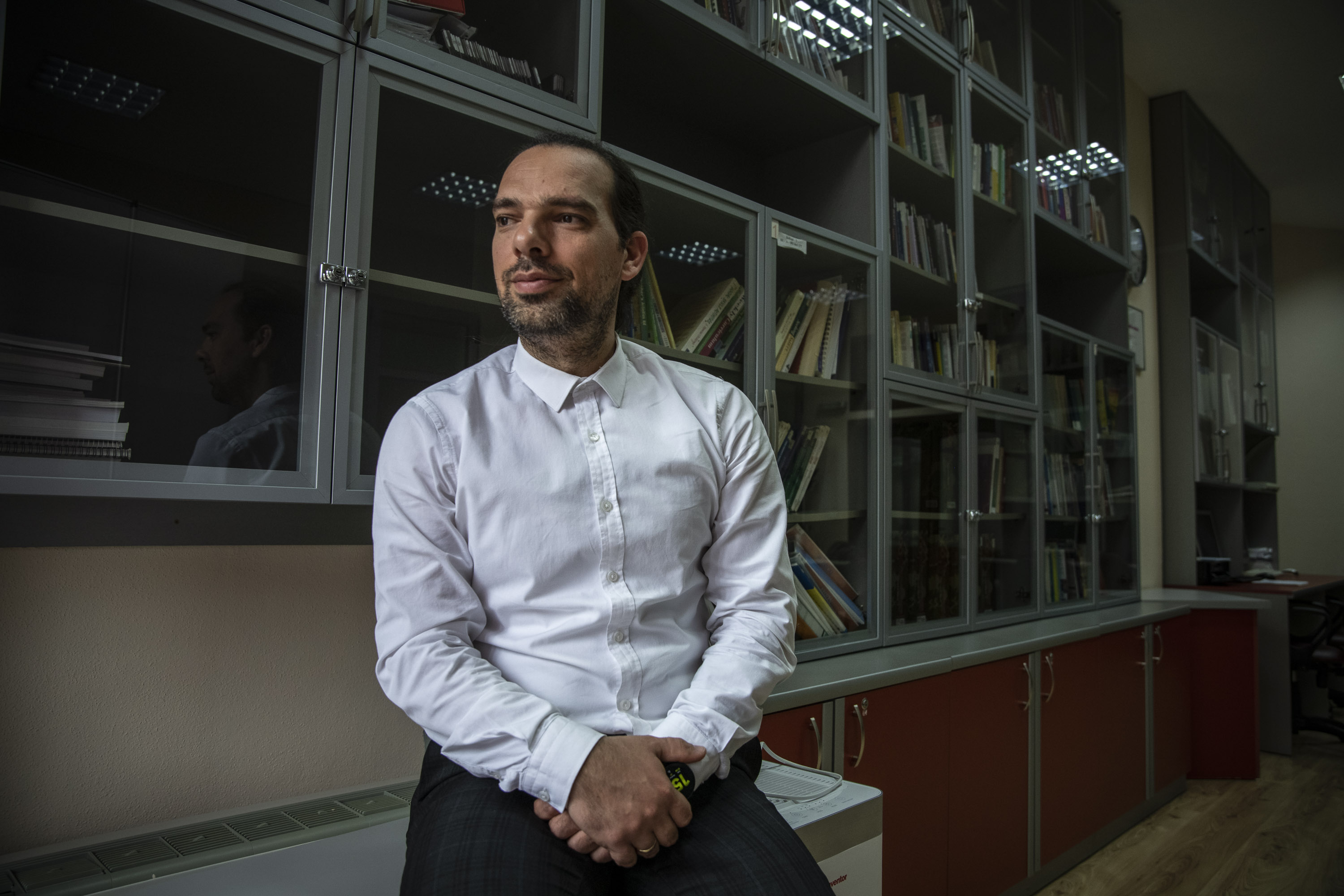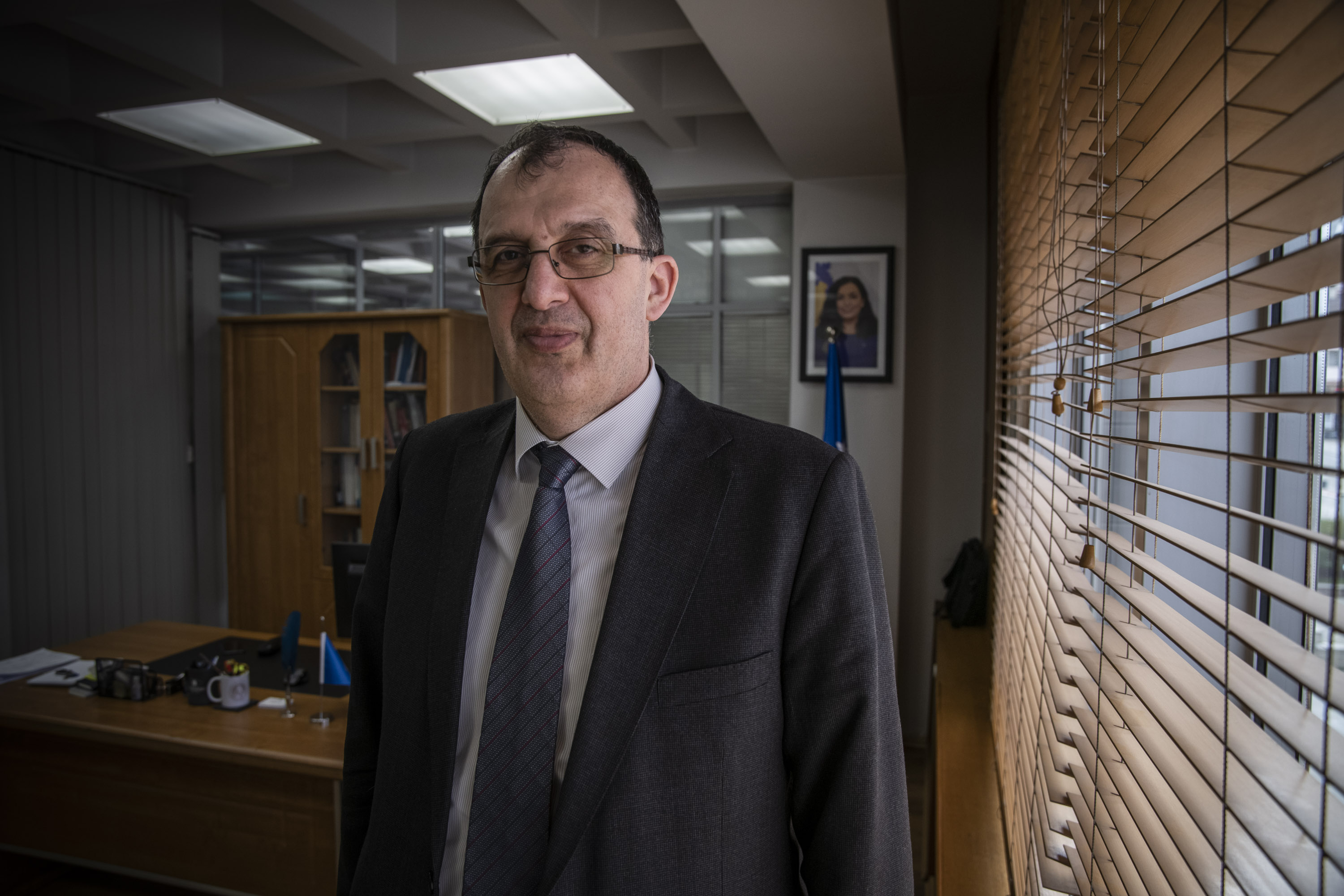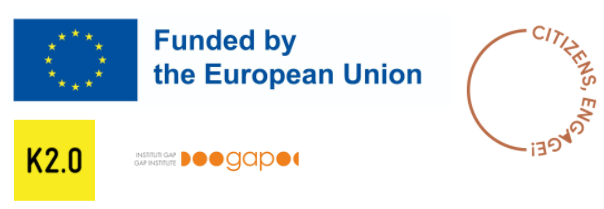The new PISA test finds Kosovo’s education system with old problems.
The poor results of the Kosovo education system on the 2018 Programme for International Student Assessment (PISA) test, which assesses students internationally, became a central part of almost every discussion regarding the quality of education in Kosovo.
The PISA test measures 15 and 16-year-old students’ academic knowledge and the results for Kosovo’s education system are below the average of the Organization for Economic Co-operation and Development (OECD) countries. Kosovo participated in the test in 2015 for the first time and the students’ results were third from the bottom. In 2018, they were only one place higher, coming in fourth from the bottom of the list.
The PISA test, which is held every three years, was not held in 2021 due to the pandemic. Now the test will be held between July and September 2022. About 6,300 students will take this test from each of the 85 countries, including Kosovo. Results are expected to come out in December 2023.
The OECD, the organizer of PISA, in their latest Western Balkans multidimensional report, lists education reforms as one of the most urgent issues Kosovo’s institutions need to address. But key reforms in the education sector aimed at raising standards and getting better results on PISA have stalled. Two years of the pandemic shook education systems everywhere, especially in countries like Kosovo, where the education system was already seen as particularly poor.
On Tuesday April 19 a student protest with the slogan “Don’t feel like going to school” took place across 28 municipalities. Through this protest, the first of its kind, organized by the Kosovo Student Council (KSC), students demanded that the attention of institutions, teachers and parents be turned towards improving the quality of education.
Now, the government that came to power a year ago, faced with the immediate need to address the consequences of the pandemic not only for education but all sectors, says there is no hope for improvement on PISA.
New curriculum in older circumstances
On March 11, 2020, when cases of Covid were increasing around the world, Kosovo’s government decided to close schools as a preventive measure.
In those circumstances, the Ministry of Education, Science and Technology (MEST) together with other parties, organized distance learning which initially included showing video lessons on Kosovo’s public broadcaster for students in primary and lower secondary education. Secondary and higher education was left to the responsibility of municipalities, which used electronic platforms such as Zoom to hold classes.
The 2020-2021 school year started after numerous delays, which were followed by Covid prevention measures, such as social distancing, that required reducing the number of students in the classroom, measuring students’ temperature, wearing masks and other measures. During this period, MEST prepared a guide for organizing learning in pandemic conditions. It presented three scenarios depending on the Covid-risk level: scenario A, in-person learning, applicable when the risk is low; scenario B, partial return, combined in-person and distance learning when the risk is moderate; and scenario C, school closures and distance learning when the risk is high.
The focus on the management of the learning process during the pandemic necessitated forgoing the implementation of the new curriculum. One of the larger reforms in the primary education system since Kosovo’s declaration of independence, this curriculum aimed to fundamentally transform the classroom.
The new curriculum in pre-university education was approved in 2011, revised in March 2016 and planned to be implemented only two years later, in 2018.
The curriculum was structured to change education from being subject-based — focusing on increasing subject knowledge such as mathematics and grammar — to developing broader aptitude and skills. This framework aims to prepare Kosovo’s young people to face the challenges of the 21st century and to generate new competitive knowledge for the global labor market.
Although the implementation of this curriculum would significantly increase the quality of education in Kosovo, this process has been consistently criticized because it did not take limited infrastructure and human capital into account. Schools continue to lack libraries, laboratories and computers, while teaching continues being held in two shifts, one in the morning and one in the afternoon.
The Kosovo Pedagogical Institute (PIK), an independent organization that provides professional services to MEST, conducted research in 2019 on the new curriculum’s implementation. According to them, the new curriculum was improperly implemented and schools “have remained alone in leading the implementation of the curriculum at the school level, without consolidated and continuous professional support.”
In the absence of a coordinating body, according to PIK, the main activities related to curricular reform are fragmented and uncoordinated by MEST. The fact that municipal education directorates (MED) lack the capacity to implement the new curriculum was raised by the OECD in a recent report, which stated that MEDs and schools need more resources to implement quality assurance processes in teaching.
One of the consequences of this lack of coordination is noticeable in the preparation of new textbooks, which is an essential part of the new curriculum. Petrit Tahiri, director of Kosovo Education Center (KEC), a non-governmental organization (NGO) dealing with education, says that the new curriculum’s implementation has been damaged by a lack of prior preparation.
For example, according to the new curriculum, teachers have the opportunity to select textbooks other than those selected by MEST if they believe that those textbooks would help meet the specific needs of their students.
“This is a very good thing that has happened for the first time in our country,” said Tahiri, but added that parents, teachers and students were not sufficiently informed about the process. As a result they were not prepared to choose their own textbooks.

Dukagjin Pupovci, Deputy Minister at MEST, says that the ministry is aware that the new curriculum’s implementation has not happened under normal conditions.
“Regarding the implementation of the new curriculum, this is one of the biggest challenges of Kosovo’s education system,” said Pupovci. “The compilation took a long time, but the results of that compilation have not been followed properly.”
According to Pupovci, in addition to the challenges inherited from before, together with the lasting effect of the pandemic, MEST had to focus on normalizing the learning situation in the new circumstances, which further slowed the implementation of the new curriculum. “These extraordinary disorders in the learning process [during the pandemic] did not allow us to focus on addressing curriculum-related issues,” he said.
However, according to him, steps have already been taken to push this process forward.
One of the steps is the creation of local education boards that can help decentralize responsibilities for curriculum implementation from the ministry to the local level. Composed of teachers and other professionals, they will be responsible for taking care of the qualitative and quantitative realization of the curriculum.
One step that is expected to help implement the new curriculum is the updating of textbooks, which a new draft law should help expedite. Among other things, the law would create stricter criteria for evaluating textbook content. Currently, the education system in Kosovo operates with content that is considered outdated, inaccurate and that contains discriminatory language, especially when it comes to ethnic minorities, women and LGBTI+ people.
Despite this, the draft law has been pending approval from the Assembly for five years, although in 2021, the government said that they believe that the law will go to the Assembly within the year. The current textbook law is from 2007.
Meanwhile, KEC has identified several other challenges that are hindering the implementation of curricular reform. This includes the fragmented and incoherent approach to implementing reforms and the insufficient orientation and support for teachers and schools. They also mention the poor quality of school management and the insufficient engagement of municipal directorates in this process.
According to Tahiri from KEC, the municipal directorates, school principals, teachers and educational staff are expected to implement the policies and instructions drafted by the ministry. But, according to him, there is a lack of communication and harmonization of action between MEST and MEDs.
Another unfulfilled strategy
Urban and rural schools in Kosovo differ greatly from each other, both in terms of the number of students and teachers, and in terms of infrastructure and capacities.
While some large city schools may be equipped with computers, libraries and other teaching aids, schools in smaller towns or villages are still only equipped with basic tools such as blackboards and chalk. There are differences in human resources in the MEDs as well. Despite these differences, MEST largely uses the same strategic approach regardless of the school.
In the case of delays in curricular reform, the fact that every municipality was treated in the same way was considered a key factor in the failure to improve school quality across the board and the failure to implement other policies from the Strategic Education Plan of Kosovo 2017-2021 (KESP), the basic document for the development of the education sector.
This strategic plan, approved in 2016, contains seven objectives to develop an education system based on quality, inclusivity and accountability with the purpose of preparing students in line with international standards and best practices.
According to an estimate by KEC, by 2021 only two of the 48 targeted results of the seven strategic objectives and 19 of the 264 planned KESP measures have been fully realized.
The main findings of the evaluation show that among the reasons for not meeting the goals of KESP, were the numerous general and local elections between 2017 and 2021, which shifted attention away from education problems. During this period MEST underwent a change in leadership four times.
KEC also mentioned that MEST had failed to create a sustainable system where local levels would bear the responsibility and accountability for the implementation of obligations arising from KESP.
According to Tahiri, to facilitate the implementation of this strategic plan at the local level, KEC worked with some municipalities to develop local action plans in accordance with the strategy at the central level while also taking into account the needs and circumstances of the local context. However, according to Tahiri, these have not been implemented.
“Unfortunately, even the plans that have been drafted by municipalities and approved in municipal assemblies or by the mayors themselves have not been implemented,” said Tahiri. “The general lack of capacity does not stem from the lack of strategic documents but the lack of their implementation, respectively the lack of capacity for implementation.”
Deputy Minister Pupovci says that the main issue facing all education strategies is implementation.
“There has always been a broad consensus about these plans, there haven’t been different stances taken, it’s that some things were done for political gain that were not at all in the strategic plans,” he said.

As of the end of 2021, Kosovo did not have a strategic education plan, as MEST was still preparing it. The KESP 2022-2026 draft is expected to be ready shortly, and according to Pupovci it will be organized around five objectives: education in early childhood; quality in pre-university education; training and vocational education; connection with the labor market; higher education and digitalization.
One of the objectives that has a chain impact on the realization of other strategic objectives is digitalization, a process that has constantly stalled. The use of technology in education during the pandemic has shown that digitalization and the provision of digital skills for teachers and students has not been successful. Even according to Pupovci, this component has not been addressed.
“In the last KESP the digitalization of the education system and the supply of schools with computers was a central part,” said Pupovci.
“It never happened because there were requests for state funds for this, and that it be coordinated at the national level, but it was never implemented,” he said.
But according to him, in the new KESP, digitalization will be a key objective and the ministry will be reorganized to be able to implement it. The first step towards this will be the adaptation of the European framework for digital competencies to the needs of Kosovo.
While the pandemic highlighted the importance of digitalization, Tahiri says that the lessons learned during that time have not been properly utilized.
“I say it with regret, as a society we are failing to use this momentum to learn from the pandemic and to continue this process,” said Tahiri, adding that in KEC they are implementing projects to help schools prevent this gap between traditional learning and technology from widening and to promote ”blended learning” — combining normal content with technology.
“It remains problematic that instead of going through and using what we have learned, we just went through and came back in March 2021, as if this period is the dark period of pandemic and we are continuing where we left off,” he said.
Disorder
The World Bank’s Human Capital Index in 2020 — before the pandemic — estimated that a child starting school at the age of four in Kosovo is expected to complete 13.2 years of schooling by the age of 18. According to their indicator, which measures the years of schooling against the lessons learned, 18-year-olds in Kosovo, in fact, receive schooling that is equivalent to 7.9 years of lessons, 5.3 less than they should have.
The World Bank predicts that the impact of school closures will be felt for decades. According to their evaluation of the economic and social impact of the pandemic among Kosovo’s neighbors, despite the rapid actions of these countries, learning losses due to the pandemic will be “inevitable and considerable.” The report anticipates that these losses will disproportionately affect vulnerable groups.
This happened in Kosovo, especially among students from the Roma, Ashkali and Egyptian communities, who even before the pandemic lived in difficult socio-economic conditions that made it difficult for them to have equal access to education. During the pandemic they faced greater challenges during online learning. Research shows that because of a lack of appropriate technological equipment, students from the Roma, Ashkali and Egyptian communities were deprived of their access to education due to the pandemic. MEST intends to compensate for this loss through financial support of community-based learning centers.
According to Pupovci, obstacles in the educational process have continued to accumulate despite efforts for additional learning.
“This two-year period of the pandemic, I think, has caused so much disorder that we cannot be very optimistic that there will be improvements now in 2022,” said Pupovci. He added that they have already made preparations for the PISA, including instructing students on how the test is organized so that technical aspects do not affect their performance. Pupovci thinks the results will be a true indicator of Kosovo’s primary and secondary education system.
But according to Tahiri, governments in Kosovo have not taken into account the previous results of the PISA or those of the Trends Test in the International Study of Mathematics and Science (TIMSS).
“On the contrary, the results of the past years, whether from PISA or TIMSS, have been used in many cases as a tool to attack both teachers and parents,” said Tahiri. “We cannot say let’s do some ad-hoc interventions and we’ll do better. The interventions in the system must be systematic, coherent and continuous.”
TIMSS
The Trends in International Mathematics and Science Study Test (TIMSS), which measures math and science skills every four years by testing fourth and eighth-graders, tested fourth-graders for the first time in 2019 in Kosovo.
The results of the TIMSS 2019 test highlight the stagnation in achievement in mathematics and science for Kosovo students in fourth grade (10 years old). In both areas they performed below the international average. In mathematics, out of a total of 1,000 points, Kosovo students received 444 points, 56 points less than the international average. Kosovo is ranked 49th out of 58 participating countries. In science, students received 413 points, 87 points less than the international average. Kosovo is ranked 52nd out of 58 countries.
Although these assessments should inform central level decisions on the need to prioritize the education sector, Kosovo’s budget in the last five years for this sector has not increased significantly. In 2020 the budget increased 5.2%, the largest increase, and this year it was increased 3.98%. The government’s list of budgetary priorities notes the education sector as having the fifth highest priority over the past three years.
Meanwhile, taking into account the need to intervene in the education sector after the pandemic, according to a report by GAP Institute, between March and December 2021, only 1.5 out of 270 million euros of budgetary allocations went to the education and science sector. Roughly 70% of that 270 million euros went to pandemic management and economic recovery, widely regarded as key priorities.
In the planned annual budget for the education sector, the vast majority goes to wages, capital investments and goods and services. There is little or no budget allocated for investments in quality education projects, the implementation of curricular reforms, creating student and teacher support services, professional literature, school libraries or new technological equipment.
Education in the region
According to the available data, government expenditures for education in the region are similar to Kosovo’s expenditures, at around 3 to 4% of GDP. These countries’ performance in international tests are also similar.
On the 2018 PISA, students from the Western Balkans scored an average of 402 points in reading, 414 points in mathematics and 408 in science, which means that about 80% of students in all OECD countries scored more than the average student in the region. However, there are major differences between education systems within the Western Balkans. Serbia’s average scores in reading, math and science, for example, are similar to those of some European Union countries, such as Bulgaria, Greece and Romania. On the other hand, Kosovo’s average performance is closer to that of low and middle-income countries such as Indonesia and Morocco.
However, Pupovci says that this year the budget for this sector will increase further after they request additional funds from the Ministry of Finance. Moreover, they expect to receive funds from external donors that will be used to implement the new 2022-2026 strategy.
Tahiri says that they have given recommendations to change the funding formula for the education sector, taking into account the needs of municipalities, schools, professional development of teachers and the fact that the number of students is decreasing. For example, compared to last year, Kosovo this year has about 14,000 fewer students in primary and lower secondary schools according to the Kosovo Agency of Statistics.
“This reduction in numbers could potentially lead to the closure of schools, and could lead to teachers being left unemployed,” said Tahiri. “There should be a budget that supports schools, MEDs and the ministry of education in general in relocating teachers who are potentially, let’s say, a surplus in the system.”
With the PISA test approaching, learning losses during the pandemic are predicted to significantly affect the results of Kosovar students in this test.
“We have made all the preparations, we have informed the students about the way the test is organized so that at least technical aspects do not affect their performance,” said Pupovci. “We are aiming for a real result, and hoping that the lack of knowledge on how to work on a computer or something similar will not affect [the result].”
PISA results are expected to decline globally and not only in Kosovo. Due to the pandemic, the World Bank predicts that in the next PISA test, some countries may fall to the level they were in 2015, or even below.
“For us as Kosovo, if we score the same as in the last assessment, it could be considered a success,” said Tahiri.
Meanwhile, the implementation of the new curriculum and the strategic plan for education seem to be the keys for the progress of Kosovar students in general and in the PISA test. Students have already started demanding this progress through the mobilization and protests throughout Kosovo.
Feature image: Ferdi Limani / K2.0.

This publication was published with the financial support of the European Union as part of the project “Citizens Engage”, implemented by K2.0 in partnership with GAP Institute. Its contents are the sole responsibility of Kosovo 2.0 and GAP Institute and do not necessarily reflect the views of the European Union.
Why do I see this disclaimer?
- This story was originally written in Albanian.


